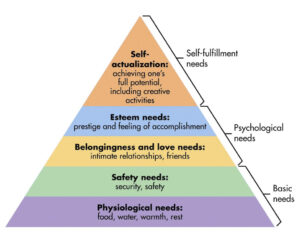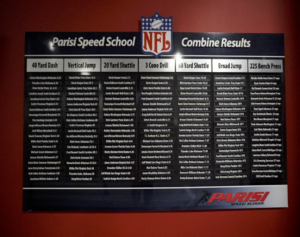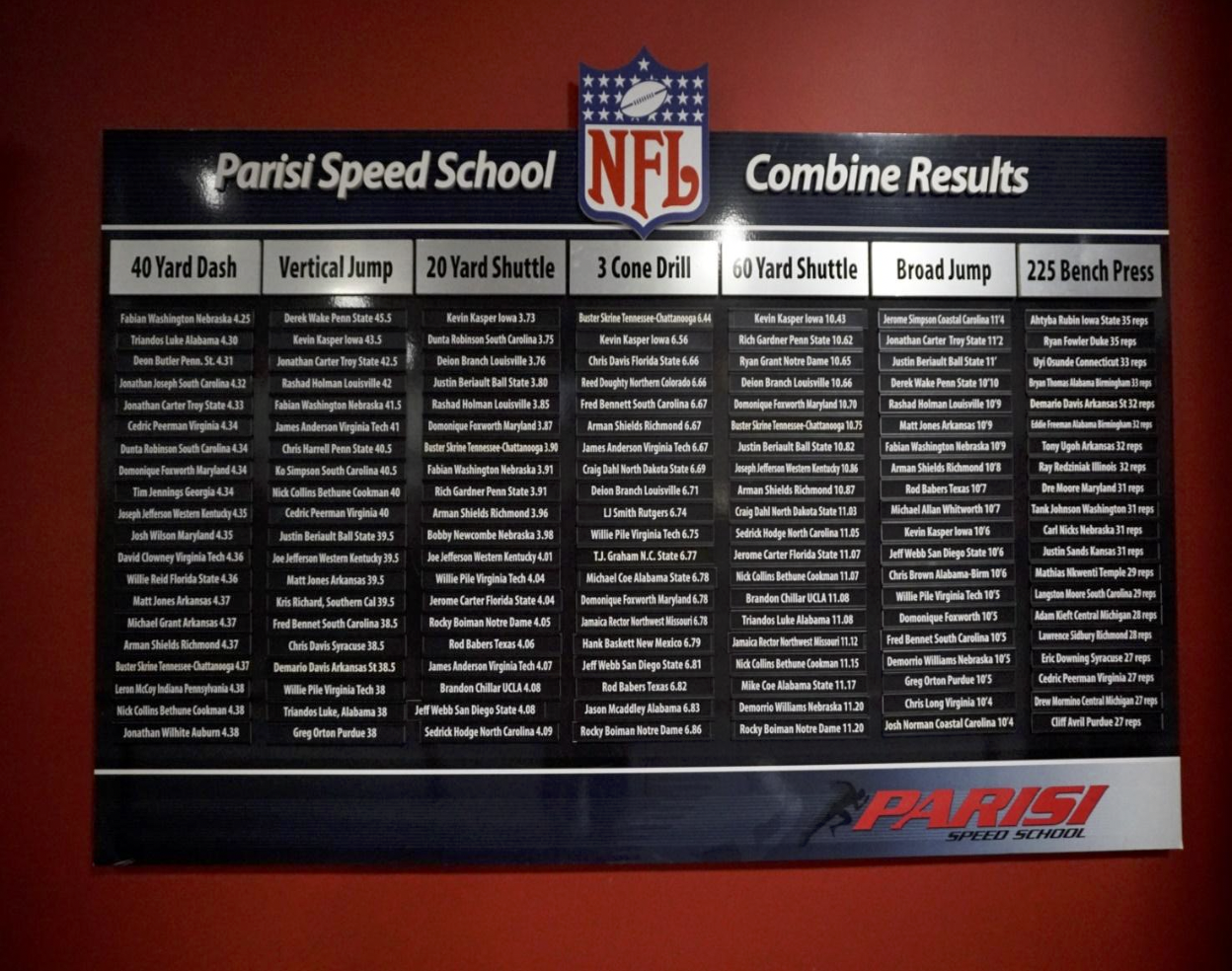Do you ask yourself what drives or motivates you to do something? What makes you go the extra mile to accomplish a goal or task? What makes your normal daily practice elicit marvel from others at your commitment? This blog will hopefully answer that question through a behavioral theory written almost 75 years ago.
More specifically, what are the driving factors that make exercise a regular part of certain people’s lives? As a strength and speed coach and the owner of Parisi Speed School in Fair Lawn, NJ, this question has always intrigued me. My quest for understanding led me to a popular motivational theory called the Hierarchy of Needs. Abraham Maslow’s Hierarchy of Needs appeared in a paper published in 1943’s Psychological Review titled “A Theory of Human Motivation.” 1 His theory was that motivation was a chronology of needs that, once fulfilled, would allow movement to the next need. The theory is that human actions are motivated by goal attainment. The common depiction of these is a triangle, with a base of essential basic needs progressing up a five-layered pyramid to self-fulfillment at the top.
The fifth growth need is self-actualization: being the best you can be and reaching your fullest potential. To get to this level, a person must master the first four tiers. Maslow also created a term called “metamotivation,” 2 which occurs when you have realized all needs; this leads a person to constantly strive for betterment.

(Above) Maslow’s hierarchy of needs: the five tiers to self-fulfillment.
So what, if any, correlation exists between the Hierarchy of Needs and the responses to the question “what motivates you?”? Let’s take a look.
Three distinct groups of athletes were asked this question; the common theme among all the athletes was an unequivocal passion for training, and each considered exercise an essential component of their lives. Note of full disclosure: they all train or did train at my facility. The groups were: High School / College athletes, NFL hopefuls, and adults. The ages, male and female, ranged from 16-50.
Since 2007, I have had the privilege of being part of one of the most successful NFL Combine prep programs in the country, amassing over 130 drafted players. In early December, when the participants arrive at the Parisi Speed School for their 10-week training program, they receive a piece of paper with several questions about measurables. At the bottom of the page is the most important question: “What’s your WHY? What motivates you?” For the NFL hopeful the answers usually match one of three categories: love of the game, destiny fulfillment, or financial motivation. Each motivating factor seemed to emerge at an early age as continued success in the sport became realized. When they sometimes questioned their ability to play their passion at the highest levels, someone always reassured them it was a dream within their grasp.
From their perspective, these athletes had the chance to play a game they love, potentially earn millions of dollars and bask in admiration from enthusiastic fans. The athletes used words and phrases – security, family, financial freedom, betterment, providing for their family, being the best they can be – that matched the Hierarchy of Needs pyramid.

(Above) The Parisi NFL Combine Board: all the results are from the NFL Combine held annually in Indianapolis. All players listed trained at the Parisi in Fair Lawn, NJ.
But how about the rest of the population that exercises and trains just as hard, if not harder? I next looked at the largest population at my training facility – the elite high school athlete. I asked them the same question I posed to the NFL players who train here – “What motivates you?”
The responses of this group were different from those of the potential NFL player; there was no mention of a financial reward, fulfilling one’s destiny, or even love of their sport. The common theme was the goal of raising the bar of performance. Their motivation came from repeated success and the desire to see how far it could take them. Responses such as: I wanted to make my High School team, I want to be a starter, I wanted to play in college, I wanted to get a scholarship, or I wanted to be successful at the collegiate level. Each athlete always sets a new goal once they achieve the previous step. Half of the responses mentioned not letting down their parents. Looking at the hierarchy of needs, these responses definitely fall within the psychological tier of the pyramid. For these student-athletes, the structures of their families and schools still provided the support of their basic needs.

(Above) Quotes to live by: a banner that hangs at the front of the track. Some extra motivation to get through a tough training session.
The adults who train at the Parisi Speed School do so in a program called Training for Warriors. Ranging in age from 22-65, these men and women are teachers, lawyers, police officers, business owners and consultants. What unites this varied group is the undying passion to train. I surveyed them to determine what motivates them to come in 4 times a week as early as 5:45 in the morning. While varied, the responses still contained consistent themes: Peer-to-peer accountability, feeling and looking better, it’s fun, quality of life, and empowerment. Betterment was also a key factor, as the participants often referenced they were happy with their appearance and wanted to continue to improve. Training had become a big part of their life. Looking at the pyramid, there are a few factors driving this behavior. Peer accountability fits a psychological need, and the constant need for betterment would be at the top of the pyramid. For members in this group, the motivation is to be their best self – a process that will never end.
The Hierarchy Of Needs continues to be taught and debated to this day, almost 75 years after it first appeared. Undisputedly, everyone is motivated by different factors. For some, a pyramid doesn’t explain their drive, but many others can see a direct correlation between these levels and what makes them “tick.” Either way, we strive to be the best at what we do, no matter what it is. For some of us, that’s just the way we want it.
Sources:
1 Maslow, A.H. (1943). “A theory of human motivation”. Psychological Review. 50 (4): 370–96. doi:10.1037/h0054346 – via psychclassics.yorku.ca.
2 Goble, F. (1970). The third force: The psychology of Abraham Maslow. Richmond, CA: Maurice Bassett Publishing. pp. 62.





